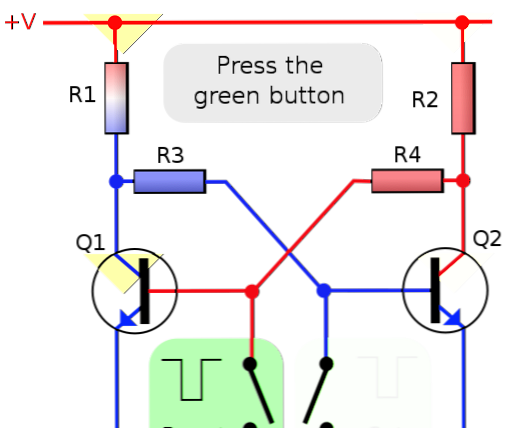What is the Difference Between Latch and Flip Flop? with Proper Definition and Brief Explanation
The main difference between latch and flip flop is that the latch checks the input continuously and changes the output when there is a change in the input. In contrast, the flip-flop is a combination of a clock and a latch, and its output is changed according to the clock when there is a change in input.
Flip-flops and latches are circuit elements that can store information. It is possible to store one bit of data in a latch and flip-flop.
Key Areas Covered
1. What is a Latch
– Operation, Input, Output
2. What is a Flip Flop
– Operation, Input, Output
3. What is the difference between Latch and Flip Flop
– Key Difference Comparison
Key terms
Circuit, Flip Flop, Latch

What is a latch
Laches work asynchronously. In other words, the output that the latch produces will depend on the input. Most computers today are synchronous. The output of these sequential circuits in computers is capable of changing simultaneously with a global clock signal.

Figure 1: SR Latch
There are four types of latches such as T, D, SR and JK latches.
What is a flip flop
A flip flop can be designed using a NAND gate or a NOR gate. Thus, a flip flop will have two inputs, two outputs, and a set and reset. This type of flip flop is known as an SR flip flop.

Figure 2: SR Flip Flop
Flip flops are capable of storing binary values. They will have an additional clock signal which makes it work very differently compared to a latch.
Difference Between Latch and Flip Flop
Structure
Latches are built using logic gates, while flip-flops are built using latches in addition to a clock signal.
Operation
There is a clear difference between latch and flip flop based on their operation. Latch checks the input continuously and changes the output accordingly while flip flop checks the input continuously but changes the output correspondingly to the clock signal.
Sensitivity
The latch is sensitive to the input switch and is capable of transmitting data as long as the switch is on. On the other hand, the flip-flop is sensitive to the clock signal and the output will not change until there is a change in the input clock signal.
Binary Input
Another difference between them is that latches work with binary inputs only while flip-flops work with binary inputs as well as clock signal.
Trigger
The lock is level triggered as the output will only change with the change in the binary level. Flip-flops, on the other hand, are edge triggered and the output will toggle based on the positive edge or negative edge of the clock signal.
Role as Registry
The latches cannot be used as a register due to the lack of a clock signal. However, flip-flops are capable of functioning as registers since they come with a clock. Hence, this is also a difference between them.
Synchronous Nature
Also, latches are not synchronous, as they cannot work based on the time signal. But, flip flops are synchronous as they work based on the clock signal.
Conclusion
Flip-flops and latches are circuit elements that can store information. In short, the main difference between latch and flip flop is their method of operation. Latch checks the input continuously and changes the output accordingly, while flip flop checks the input continuously but changes the output correspondingly to the clock signal.
Courtesy image:
1. “Interactive flip-flop transistor animation” By DrJolo – Own work (CC BY-SA 3.0) via Commons Wikimedia
2. “SR (Clocked) Flip-flop Diagram” by Inductiveload – Own drawing in Inkscape 0.43 (Public Domain) via Commons Wikimedia